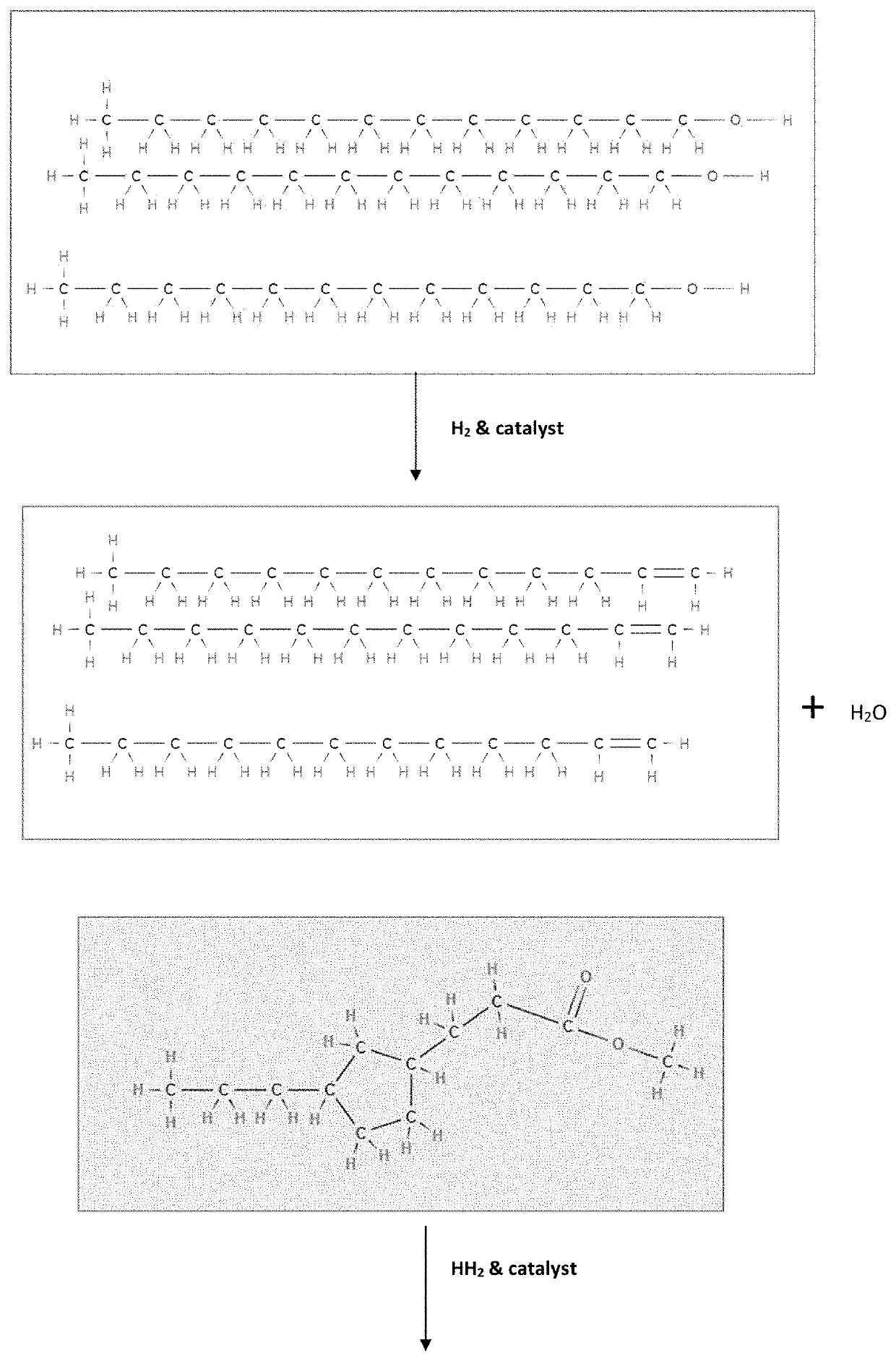Production of Linear Alpha Olefins
a technology of alpha olefins and linear alpha olefins, which is applied in the direction of hydrocarbon oil treatment products, extraction purification/separation, organic chemistry, etc., can solve the problems of high capital expenditure (capex) and operating expenditure (opex) of ethylene feedstock, and the reactor and catalyst system are very complex, so as to achieve cost reduction, simple process configuration, and cost competitive
- Summary
- Abstract
- Description
- Claims
- Application Information
AI Technical Summary
Benefits of technology
Problems solved by technology
Method used
Image
Examples
examples
[0059]Having described the basic aspects of the present invention, the following non-limiting examples illustrate specific embodiment thereof. Those skilled in the art will appreciate that many modifications may be made in the invention without changing the essence of the invention. Productions of linear olefins and central olefins through the reaction scheme mentioned in the present invention under controlled conditions is illustrated by the following example.
example-1
[0060]Mixture of methyl ester of fatty-acids constituting methyl dodecanoic acid (63%), methyl myristic acid (26%), and methyl decanoic acid (11%) is processed in a fixed-bed micro-reactor unit (MRU). The MRU loaded with mild hydrocracking catalyst (MHC) is operated at following operating conditions as disclosed in Table 1.
TABLE 1Operating Conditions for Example 1OperatingSr. No.Operating ParametersUnitrange1.Weighted Average Catalyst Bed° C350-410Temperature (WABT)2.Hydrogen partial pressurekg / cm2 g10-303.Linear Hourly Space Velocity (LHSV)h−114.H2 to feed ratioNm3 / m3 300-1000
[0061]The cumulative product is collected and then analyzed. It has been observed that the conversion of fatty acid / triglycerides is ˜100%. The yield (in wt. %) of different components is given below in Table 2. The carbon number of LAO, central olefin and paraffins, are in the range between C10-C16. The aromatics are mainly benzene derivatives.
TABLE 2Yield in wt. % of different componentsLinear alpha olefinCe...
example-2
[0062]Mixture of fatty acids (i) methyl palmitic acid (40%), methyl oleic acid (45%) and methyl linoleic acid (15%) is processed in a fixed-bed micro-reactor unit (MRU). The MRU loaded with mild hydrocracking catalyst (MHC) is operated at following operating conditions as disclosed in Table 3.
TABLE 3Operating Conditions for Example 2OperatingSr. No.Operating ParametersUnitrange1.Weighted Average Catalyst Bed° C400Temperature (WABT)2.Hydrogen partial pressurekg / cm2 g 153.Linear Hourly Space Velocity (LHSV)h−11, 1.3 & 1.64.H2 to feed ratioNm3 / m3500-600
[0063]The product is collected and analyzed. It has been observed that the conversion is ˜100%. The yield (in wt. %) of LAO, central olefins, and aromatics at three LHSV values is given below in Table 4. The carbon number of LAO, Central olefin & Paraffins, are in the range between C16-C18. The aromatics are mainly benzene derivatives.
TABLE 4Yield in wt. % of different componentsLHSVLinear alpha Central OlefinParaffinsAromatics(h−1)olefi...
PUM
| Property | Measurement | Unit |
|---|---|---|
| operating pressure | aaaaa | aaaaa |
| bed temperature | aaaaa | aaaaa |
| operating pressure | aaaaa | aaaaa |
Abstract
Description
Claims
Application Information
 Login to View More
Login to View More - R&D
- Intellectual Property
- Life Sciences
- Materials
- Tech Scout
- Unparalleled Data Quality
- Higher Quality Content
- 60% Fewer Hallucinations
Browse by: Latest US Patents, China's latest patents, Technical Efficacy Thesaurus, Application Domain, Technology Topic, Popular Technical Reports.
© 2025 PatSnap. All rights reserved.Legal|Privacy policy|Modern Slavery Act Transparency Statement|Sitemap|About US| Contact US: help@patsnap.com



